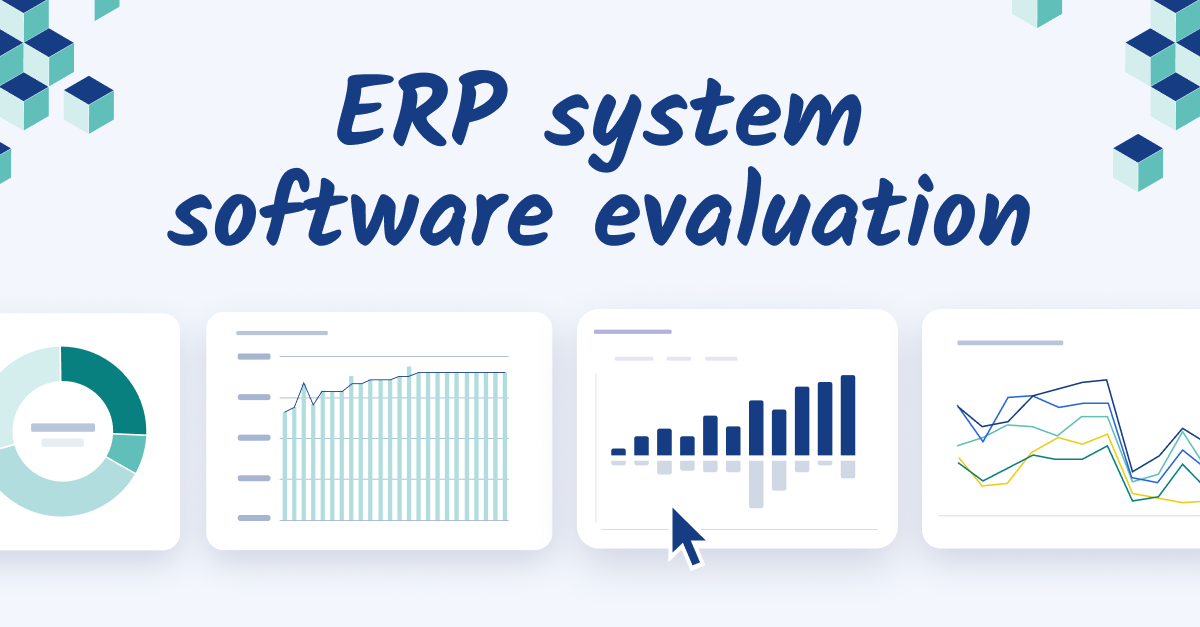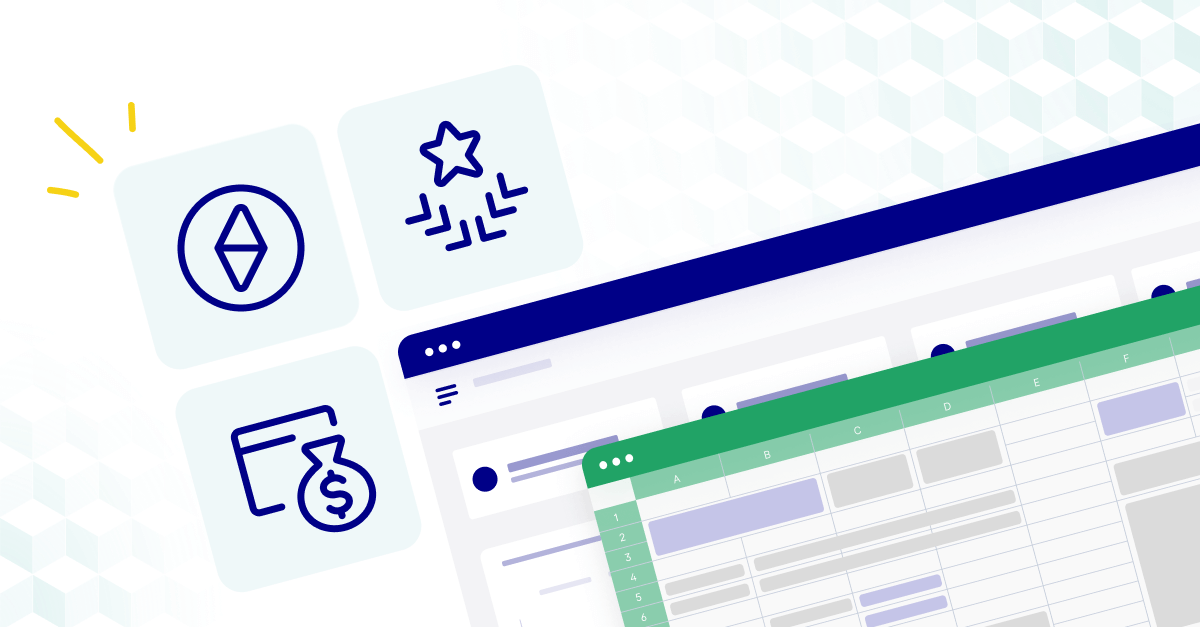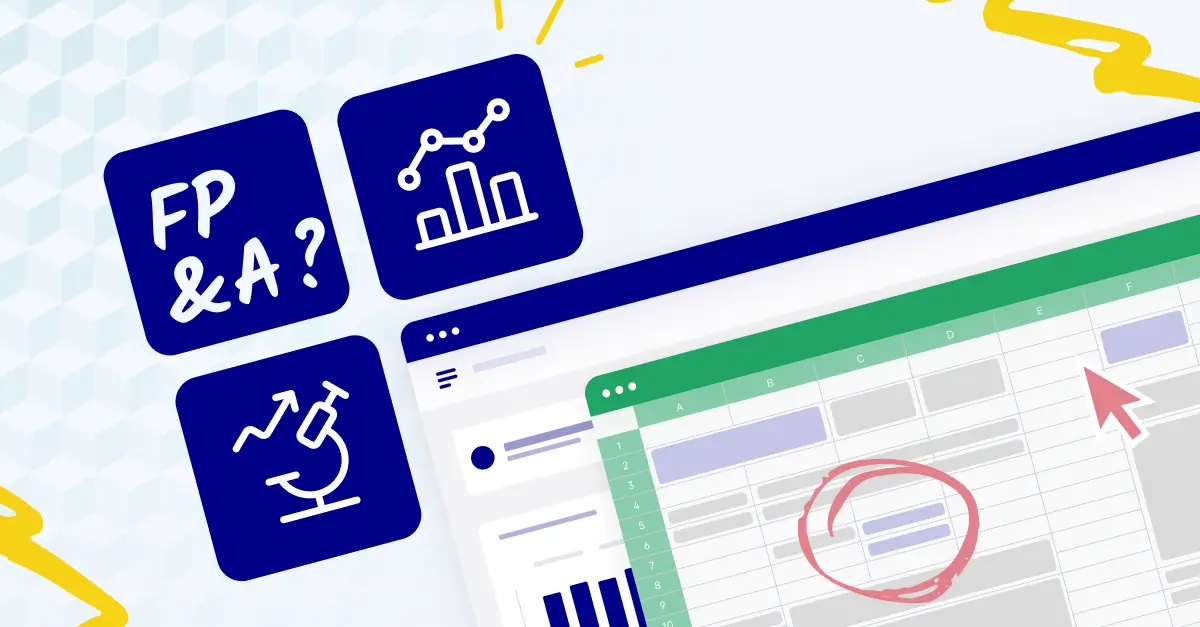What is ERP system software?
ERP (Enterprise Resource Planning) systems are integrated software platforms designed to centralize and streamline business operations. They serve as the backbone of an organization's data processing and decision-making infrastructure.
The main purpose of an ERP system is to foster efficiency and data coherence across departments, from finance to supply chain management. They act as a unified source of truth, providing real-time insights and facilitating a more cohesive strategy across a business.
The importance of ERP systems in FP&A
For finance and FP&A leaders, ERP systems are indispensable tools. They provide a comprehensive view of an organization’s financial health, integrating data from sales, purchasing, inventory, payroll, and more. This integration is vital for accurate forecasting, budgeting, and financial reporting.
ERPs aid in identifying trends, potential risks, and opportunities, allowing finance teams to make data-driven decisions quickly. They also enhance compliance and governance by ensuring consistency in financial data and processes, which is critical as regulatory requirements become more advanced.
Key features and capabilities of modern ERP systems
Modern enterprise resource planning software has evolved to offer features specifically tailored to the needs of finance professionals. These include:
- Advanced analytics and reporting: Offering sophisticated tools for financial analysis and reporting, modern ERPs can process large volumes of data to generate insights into profitability, cash flow, and other key financial metrics.
- Budgeting and forecasting: ERPs provide robust modules for budget creation and management, forecasting future financial scenarios based on historical data.
- Real-time data access: Modern ERPs offer real-time access to financial data, enabling a quicker response to market changes and internal demands.
- Automation of financial processes: Automating routine tasks such as accounts payable/receivable and ledger management, ERPs reduce manual errors and free up valuable time for strategic activities.
- Risk management and compliance: They come equipped with tools to manage risk and ensure compliance with various financial regulations and standards.
- Scalability and customization: Adaptable to the growing and changing needs of a business, these systems can be customized to fit unique organizational requirements, ensuring long-term use.

Key considerations in ERP system evaluation
Selecting the right ERP system involves a careful balance of functionality, scalability, integration, vendor reliability, and cost considerations.
Each of these elements plays a crucial role in ensuring that the ERP system not only fits your current needs, but also supports the future growth and evolving challenges of your business. Let's take a closer look at each element:
1. Functionality: Matching features with organizational needs
For mid-sized businesses, it's essential to prioritize ERP features that directly address your specific operational needs. So, be sure to evaluate how different ERP systems handle critical areas such as finance and accounting, customer relationship management (CRM), inventory management, and human resources.
Ensure the system offers a user-friendly interface and customizable dashboards that can deliver insights relevant to mid-sized business operations. Avoid overly complex systems that offer more features than necessary, as they can lead to unnecessary complications and costs.
2. Scalability: Considering future growth and expansion
An ideal ERP is one that can grow with the company. Assess how well the ERP software can handle increased transactions, additional users, and expansion into new markets or product lines. It's important to choose an ERP that can easily scale up its capabilities without requiring a complete system overhaul, thereby protecting your investment in the long term.
3. Integration: Ensuring compatibility with existing systems
Integration capabilities are vital, especially for mid-sized businesses that may already be using various standalone applications. The ERP should seamlessly integrate with existing software, such as FP&A software, CRM tools, e-commerce platforms, or specialized accounting software, to ensure continuity and minimize disruptions. Effective integration leads to improved data accuracy and streamlined workflows.
4. Vendor reputation and support: Evaluating vendor history and customer support services
Research the vendor's track record, focusing on their experience with businesses similar to yours. Look for testimonials or case studies from similar-sized companies. Evaluate the vendor’s support services, including training, implementation assistance, and ongoing technical support. A responsive and knowledgeable vendor can significantly smooth the transition to a new ERP system.
5. Cost analysis: Understanding the total cost of ownership
Cost is a critical factor for small to mid-sized businesses. Beyond the initial purchase price, consider the total cost of ownership, which includes implementation, customization, training, maintenance, and future upgrades. Opt for a transparent pricing model that aligns with your business's budget constraints. Be wary of hidden costs and ensure that the investment in the ERP system brings a tangible return in terms of efficiency, productivity, and decision-making capabilities.
By focusing on these key considerations, you can select an ERP system that not only meets your current operational needs but also positions your business for sustainable growth and success.
Steps to ensure an effective ERP software evaluation phase
After establishing the key considerations for selecting an ERP system, it's important to progress into the evaluation phase with a structured and focused approach. This phase is where you apply your understanding of functionality, scalability, integration, vendor reputation, and cost to make a well-informed decision. Here are the essential steps to guide you through this critical phase:
1. Detailed requirement analysis
Based on the key considerations identified, create a detailed list of requirements for your ERP. This should encompass not only your current operational needs but also consider future growth, integration with existing systems, and any specific financial constraints. This step ensures that you focus your evaluation on ERP systems that align with both your immediate and long-term business objectives.
2. Conducting focused market research
With your requirements in hand, conduct market research specifically targeted at ERP solutions that are known for meeting the needs of businesses your size. This targeted approach will help in shortlisting ERP systems that are not overly complex and are known for their scalability and ease of integration.
3. Systematic vendor evaluation
Next, systematically evaluate each vendor against your specific criteria. This involves assessing how well each ERP solution aligns with your functionality requirements, its ability to scale, integration capabilities, vendor support quality, and total cost of ownership.
4. Arranging demos and trials
Arrange for demos and trials from the vendors that rank highest in your evaluation. These hands-on experiences are crucial as they provide a real-world feel of how the ERP system will operate in your business environment. Ensure that the demos are tailored to showcase how the system will handle your specific processes and workflows.
5. Seeking feedback from key stakeholders
During and after the demos, gather feedback from key stakeholders. This feedback should focus on the system's usability, the level of customization required, and how well it integrates with existing systems.
By meticulously following these steps, your business will be positioned to select an ERP software that not only addresses your current operational challenges but also supports your strategic goals and paves the way for future growth.
Top ERP software to consider for your business
As you dive into the world of ERP systems for your business, here are some top-tier options that have proven their value in the industry. Each system offers a unique set of features and pricing structures, catering to various business needs and sizes.
1. NetSuite
NetSuite, renowned as one of the most trusted cloud-based ERP solutions, serves over 37,000 companies globally. One of Cube's top integrations, its strengths lie in automating core processes and providing real-time insights into financial and operational performance. It's highly customizable and offers enterprise-grade applications for analytics, reporting, and global infrastructure.
Key features:
- Financial management
- Accounting
- Enterprise performance management
- Global business management
- Inventory management
- Order management
- Supply chain management
- Warehouse management
- Procurement
Pricing:
NetSuite operates on a custom quote basis. However, it’s generally reported to have a licensing fee of $999/month, with an additional $99/month per user. The final cost may vary based on the chosen modules, geographical location, and specific business needs.
2. Intuit QuickBooks
QuickBooks by Intuit is a user-friendly option, ideal for managing payroll, inventory, taxes, and invoicing. It's a popular choice for outsourcing accounting systems, given its widespread use among accountants. QuickBooks is available in both desktop and online versions, with various service tiers catering to different business needs. QuickBooks and Cube have a simple API connection that allows for easy data imports and consolidations within Cube's single source of truth.
Key features:
- Bank feeds
- Cloud accounting
- Invoicing
- Project profitability
- Accounting reports
- Inventory management
- Data migration
- GST and VAT tracking
- Expense tracker
Pricing:
QuickBooks offers a range of plans, starting with a 30-day free trial or an initial 50% discount for the first three months. Plans include $30/mo for Simple Start, $60/mo for Essentials, $90/mo for Plus, and $200/mo for Advanced. QuickBooks Enterprise versions range from $1,830/year to $4,400/year.
3. Sage Intacct
Sage Intacct stands out for its financial and inventory management capabilities, enabled through real-time, multi-dimensional reporting. It automates accounting tasks and supports human resources and payroll business functions, making it a comprehensive solution for streamlining business processes and fostering data-driven decision-making.
Key features:
- Core financials
- Cash management
- Intelligent General Ledger
- Order management
- Dynamic allocations
- Revenue recognition
- Fixed assets
- Sales and use tax
Pricing:
Sage Intacct's pricing varies, with reports indicating costs ranging from $15,000 to $35,000.
Each ERP software system offers distinct advantages and could be a suitable match for your business, depending on your specific needs and budget constraints. Careful consideration of each option in the context of your organization's requirements will guide you to the best choice.
Conclusion: finding the right ERP to support your FP&A
By following a structured evaluation process and considering the specific needs of your business, you can choose a solution that not only streamlines your current operations but also positions your business for future growth and success. Remember, the right ERP system is not just a software investment; it's a strategic asset that can transform the way you manage and grow your business.
Want to learn how Cube integrates with your ERP to level up your finance function? Request a free demo today.



.png)



.png)





![13+ best financial analysis software for FP&A teams [2024]](https://www.cubesoftware.com/hubfs/Financial%20Analysis%20Software%20Featured%20Image.png)